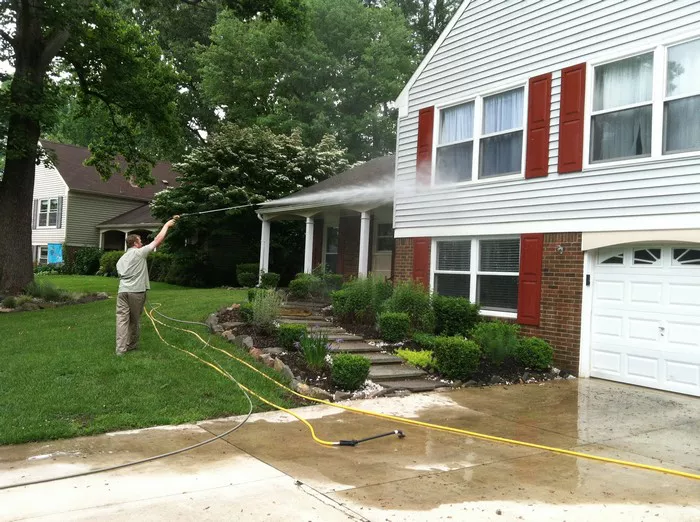Pressure washing is an efficient cleaning method that utilizes high-speed jets of water or abrasive materials to clean surfaces of houses, particularly suitable for hard-to-reach areas such as exterior walls and roofs. This method swiftly removes stains, dust, and biological residues, restoring the appearance of buildings. This article will elaborate on the steps and precautions involved in pressure washing houses.
Cleaning Steps
Preparation Phase:
1. Identify the cleaning area, assess the difficulty of the task, and risks involved, and develop a detailed cleaning plan.
2. Gather necessary cleaning tools such as a pressure washer, sandblaster, cleaning agents, brushes, buckets, etc.
3. Arrange for personnel and ensure they are knowledgeable about safety protocols and operating techniques.
Cleaning Implementation:
1. Prior to commencing, isolate the cleaning area to ensure no unauthorized individuals or animals are nearby.
2. Initiate the cleaning process by using a high-pressure water jet to remove visible dust and stains from exterior walls.
3. Depending on the level of contamination, choose appropriate cleaning agents to target stubborn stains and apply them accordingly.
4. Utilize brushes to manually clean hard-to-reach corners.
5. During the cleaning process, pay attention to the intensity and direction of the cleaning to avoid damaging the structure of the building.
Completion of Cleaning:
1. After completing the cleaning, rinse the area thoroughly with clean water to ensure no chemical residues remain.
2. Shut down the cleaning equipment and perform post-cleaning site cleanup and tidying.
3. Inspect the cleaning results to verify if the desired level of cleanliness has been achieved.
Precautions
Safety First:
1. Ensure all involved personnel wear appropriate personal protective equipment including helmets, gloves, goggles, etc.
2. When operating a high-pressure washer, be mindful of body positioning to avoid directing the jet towards individuals.
Choice of Cleaning Agents:
Select cleaning agents based on different levels of contamination and wall materials to prevent damage to the building.
Equipment Usage:
1. Familiarize yourself with the user manual of the cleaning equipment and operate it correctly.
2. Regularly maintain and inspect cleaning equipment to ensure it is in good working condition.
Cleaning Effectiveness:
Continuously monitor the cleaning effectiveness and adjust the cleaning strategy as necessary.
Environmental Protection:
1. Preferably use eco-friendly cleaning agents to minimize environmental impact.
2. Properly dispose of wastewater and waste generated during the cleaning process.
FAQs
Q1: Will pressure washing cause damage to the building?
Proper usage and selection of suitable cleaning agents can minimize damage to the building.
Q2: What impact do cleaning agents have on the environment?
Opting for eco-friendly cleaning agents can reduce environmental impact, but proper usage and disposal are still necessary.
Q3: How can cleaning efficiency be improved?
Using high-quality cleaning equipment and employing rational cleaning strategies can enhance cleaning efficiency.
Conclusion
Pressure washing is an effective cleaning method, particularly suitable for large-scale buildings. To ensure safety and cleanliness, strict adherence to operational procedures and precautions is imperative.

